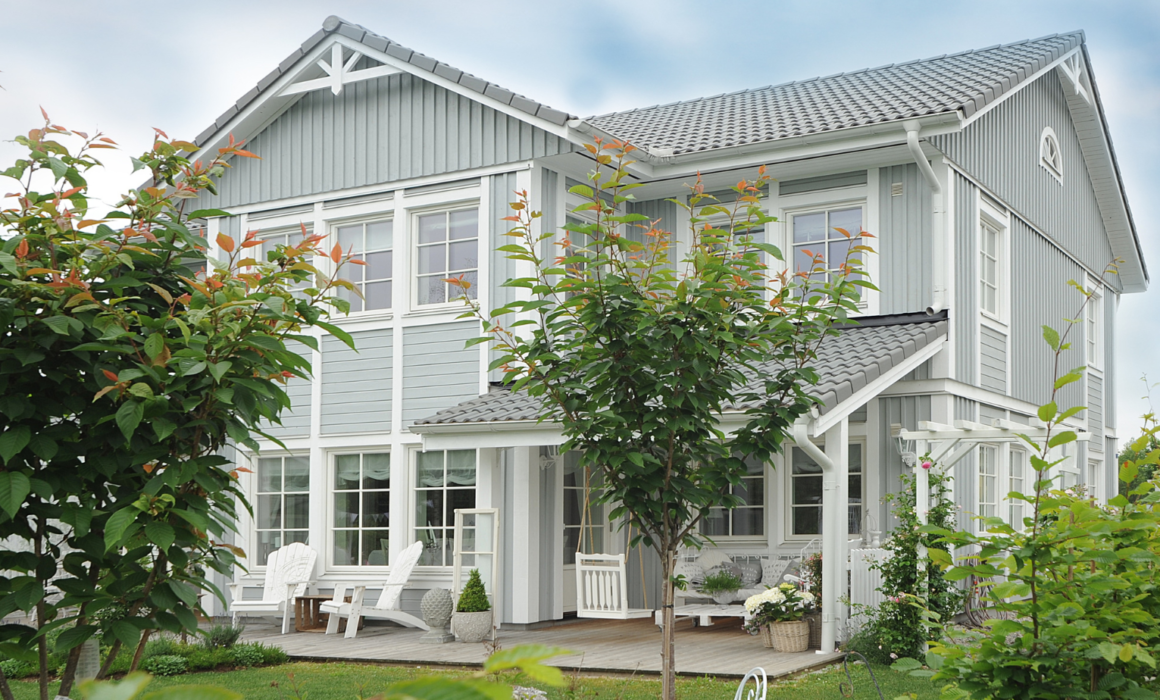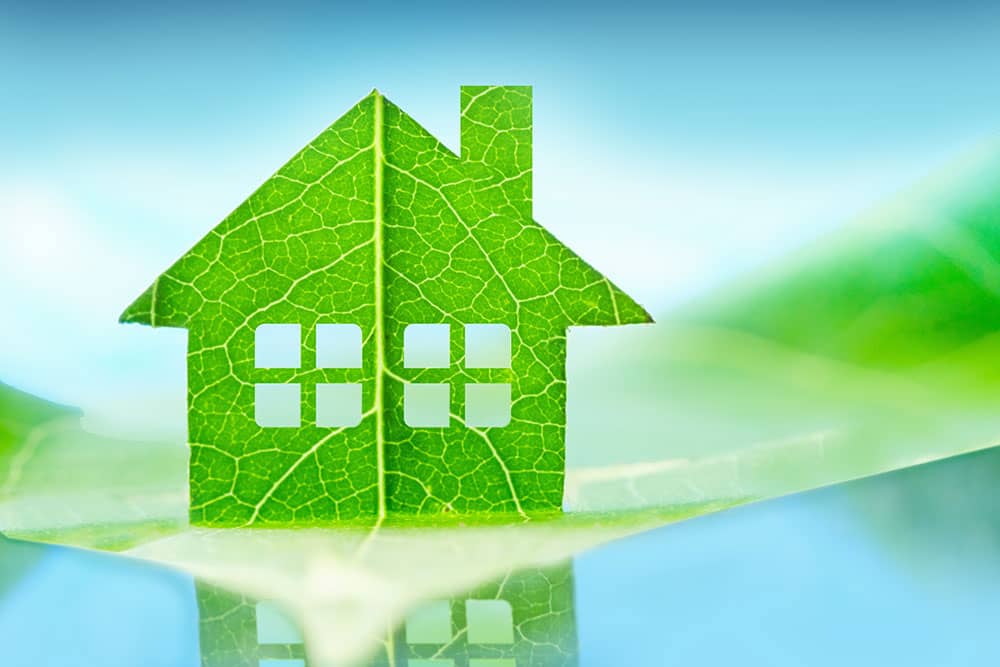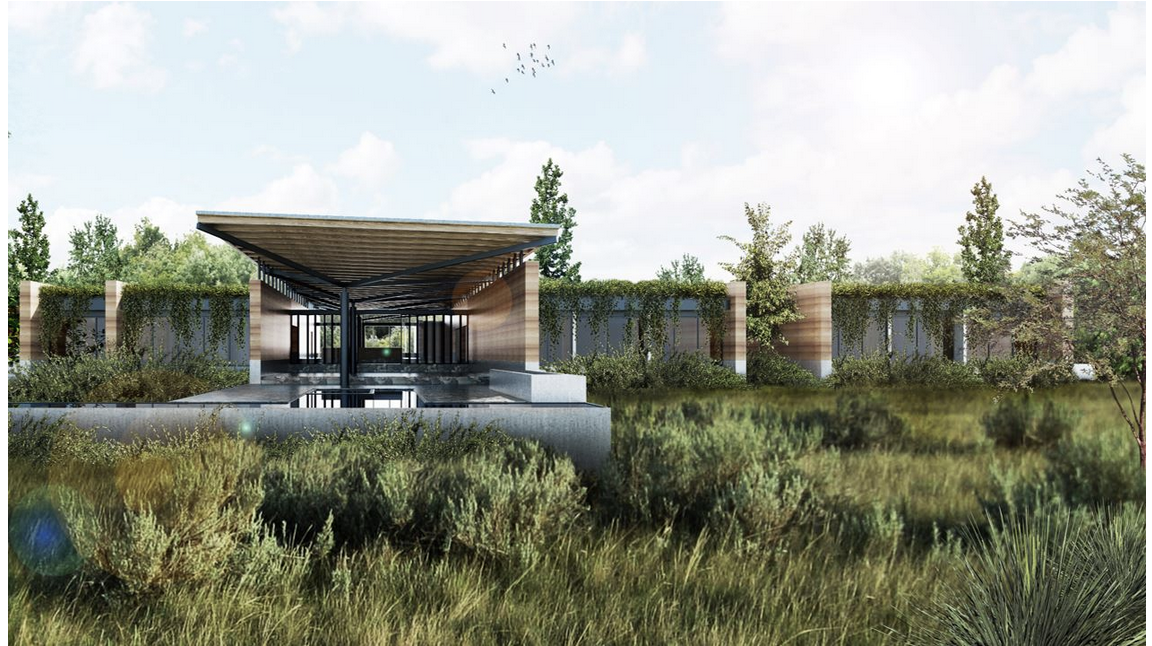Health and Wellness in Buildings
Today, we seek to regenerate the natural environment through our participation in the built environment, a participation focused on sustainability. For this reason, it must address the issue of sustainability to understand its relationship to health and wellness in buildings.
First, we will make a direct connection with the concept of sustainability, which according to the most accepted definition, is meeting our needs as a current-generation without sacrificing the ability of future generations to meet their needs. Sustainability has three pillars: economy, society, and the environment; commonly we only relate the term sustainability to the environment, but the reality is that there is no sustainability without the economic and social spheres also being covered. For the health and wellness part of the buildings, we take into account the social part of sustainability.
Background
The concept of health impacted by the built environment is not something new; since the industrial revolution, there was already a connection between how the infrastructure and urban fabric were developed and the concern for achieving greater control of the epidemics that struck society at that time. In the 70s we began to see movements focused on having a better life and eating healthier. In the 80s we began to see design and urbanism focused on wellness and emotional health, such as the philosophy of Feng Shui that proceeds to create a harmonious space to get the best energy from it that positively affects health; in urbanism, ideas of mixed uses, intelligent connections, reduction in travel times and the first ideas to reduce emissions of pollutants arise. In the 90s, with greater advances in technology and innovation, the concept of home automation, and automation of spaces, and it is when we see the start of certifications focused on sustainable building, such as LEED or BREEAM.
In the 2000s, a subtrend began within the global macro trend of health and wellness focused on a healthy lifestyle linked to real estate developments, raising questions about our health and wellness, and how it is impacted by our immediate built environment. This has led to this new movement focused on encouraging our health and quality of life, both passively and actively, in the built environment around us.
On average, we spend more than ninety percent of our time inside buildings, either where we live, work, or sometimes even where we have fun, and this situation has a direct impact on our health and well-being, so it is important to take care of how we design these spaces.
Within the concept of health and wellness, it is important to mention the dimensions of health and wellness that were initially proposed in the ’70s by Dr. Bill Hettler, who tells us that to have a state of wellness we need to apply the dimensions:
- Physical: Related to the human body, to how we exercise and nourish it.
- Intellectual: Related to creativity and how we enrich our knowledge and skills.
- Emotional: Expressing and communicating our feelings.
- Social: We need to establish relationships, build support, and contribute something to our social environment.
- Occupational: Search for personal satisfaction through work-study.
- Spiritual: Search for meaning and purpose in life.
- Economic independence: Living without financial worries.
- Environmental: Search for pleasant and stimulating environments in our opinion.
In response to this global movement, certain certifications and solutions for health and wellness-oriented buildings have emerged.
An example of this is the WELL Building Standard certification, which seeks a healthy balance between the mental, physical and emotional levels of the body by addressing these general systems that are impacted by the built environment; it is the first certification in the world-oriented one hundred percent to the way in which buildings impact us in health and well-being, in addition to having scientific research that supports the basis of the certification. WELL has ten general categories and one innovation category, which are described below.
WELL certification categories
Air
Aims to ensure and maintain the indoor air quality in spaces, seek to reduce sources of indoor air pollution present indoors, minimize any transmission of pollutants from surfaces that have a high frequency of contact with people, and have effective protocols for cleaning and handling materials that may emit certain harmful airborne pollutants.
Some strategies are to achieve minimum indoor air quality by complying with maximum levels of harmful health components, such as suspended particulate matter less than 2.5 and 10 microns, ozone, carbon dioxide, carbon monoxide, formaldehyde, and volatile organic compounds (VOCs). It is also, required to provide an adequate design to ensure the ventilation of the spaces, either mechanical or natural, which has to be documented through professional narratives and calculations where this adequate air supply for each space is taken care of.
Water
The objective is to ensure and maintain, through strategies applied to design and operation, a minimum quality of water supplied to the building, which must comply with maximum allowable levels of contaminants and harmful elements.
Some strategies are to comply with the minimum required quality of the water supplied to the building and to ensure regular monitoring, either internally or through third parties, to maintain that quality. Similarly, occupants should be encouraged to drink water instead of other processed beverages by ensuring sources of access to water.
The minimum levels of turbidity and coliform organisms in process water that could come in contact with human skin must be minimized, there must be a minimum supply of drinking water for occupants to promote the intake of water rather than sugary liquids, and chemical, organic and pesticide residue levels must be met. Monitoring and testing data can be provided by third parties.
Food
The building is expected to implement design strategies and promotion policies using the built environment as a tool to make people aware of proper food and nutrition options, and if there is a daily food supply, to provide healthy food that meets certification standards.
Some strategies are to promote the consumption of fruits and vegetables, especially if there is a food supply on-site. There should also be nutritional information on the food provided, as well as information on possible allergens and the general sugar content of everything offered in the building. This should be complemented by proper training of staff on the policies established by the project.
Lighting
The objective is to provide adequate lighting levels that do not affect the visual acuity of the occupants, and that is achieved mainly through natural light sources or artificial sources that emulate it and minimize the impact on the natural circadian cycle of the human body.
Some strategies are to achieve minimum artificial lighting levels dictated by international standards, to demonstrate that there is attention to the circadian cycle of natural lighting and how it will mimic both intensity and quality of natural lighting through artificial lighting to avoid disruption of the circadian cycle and to achieve levels of natural light autonomy through computer simulations to ensure that there is a sufficient supply of natural light during the day to provide stimulation to the circadian cycle of human beings.
Movement
Policies and strategies should be promoted to avoid sedentary lifestyles and provide options for frequent movement and physical activity, thus combating the development of chronic diseases such as obesity or hypertension.
Some strategies are to achieve an architectural design that encourages circulation and movement of people during their use of the building, for example, prioritizing stairs over elevators, applying ergonomics in the design, and providing options to work while standing, sitting, or even while performing a light exercise.
Thermal comfort
The goal is to reduce the most common sources of thermal comfort impairment, i.e., whether we feel hot or cold, to prevent possible heat-related stress and improve people’s productivity and well-being.
Some strategies are to comply with international standards related to the design of natural or artificial space conditioning systems to comply with adequate thermal comfort and to achieve an average satisfaction rate of the building’s users of over 90%. Surveys are conducted with the people who occupy the space to determine whether the aforementioned percentage is achieved, and if not, the corresponding corrective actions must be applied to achieve it.
Sound
The aim is to mitigate through the design of the building and active and passive elements any source of unwanted sound, both interior and exterior, and to address through solutions in the constructive part this acoustic insulation that provides acoustic comfort within the spaces.
Among other strategies, it is required that there is at least a mapping of acoustic zones according to the noise generated, separate noisy areas from quiet areas and transition areas, and review the solutions that are attended to see that these same areas are not interfering with each other in terms of acoustics, provide design plans and acoustic solutions and achieve minimum levels of unwanted noise reduction.
Materials
Its objective is to reduce human exposure to materials that may contain or emit harmful agents or pollutants. It should promote the analysis, identification, and management of harmful elements in construction materials as well as in cleaning and maintenance items, and also link it to proper waste management and how waste is extracted from the building, especially if it is waste that could contain any harmful element. This should also extend to outdoor and landscape areas of the building.
At the very least, it is requested that harmful elements that, fundamentally, should already be eliminated from any building code, such as asbestos, mercury, polychlorinated biphenyls, or lead, be restricted. It is also requested that there be transparency in terms of the ingredients contained in the materials and to be able to identify them in a database showing the most common pollutants and harmful agents, and to have a restriction on the content of pollutants in materials and products.
Mind
Seeks to have a positive impact on users’ mental health and well-being, help reduce their stress levels, and contribute to their psychological and spiritual growth. This can be promoted through actions, policies, or spaces that facilitate the learning and practice of activities related to mental health, such as yoga or meditation. This can be complemented by the physical or psychological connection of the building with nature and with elements that enhance the local culture.
Community
The aim is to establish an inclusive and integrated community through concepts such as social equality and equity, civic awareness and participation, and universal accessibility.
Strategies include making a WELL certification guide publicly available to all occupants, highlighting the strategies that the project achieved as part of the certification, and how it benefits users. It is also requested that there be an integrated design process-oriented to the goal of health, wellness, and community integration and resilience, making a clear connection to the overall project objectives.
Innovation
This is an additional category where the team is allowed to include innovative strategies that are not within the certification system itself but are related to a benefit to the health and well-being of the resident based on scientific evidence. It is possible to include strategies such as additional certifications, in addition to benefiting from having WELL AP credentialed personnel on the project team.
The above summarizes in a very general way some characteristics and strategies that make up the WELL certification requirements.
These strategies, called Features, are divided into two types: Preconditions and Optimizations. Preconditions are mandatory strategies that the team must fulfill as a first requirement to aspire to certification, while Optimizations are voluntary strategies, which when fulfilled add points and determine the final level of certification, which can range from Bronze to Platinum.
It is important to mention that, with the objective of holistic implementation of the WELL categories in all projects, there is a minimum ‘Point floor’ scoring system in which a minimum number of points must be met in all certification categories.
Administration of WELL Certification
WELL certification is administered by the International WELL Building Institute, a public organization with the sole mission of improving the human health and well-being of people through the built environment, and which has a commitment to direct more than half of the net profits to quality contributions and research on the strategies it promotes.
As for the systems, WELL is in constant development, however it is possible to identify within the current version (v2): Owner-Occupied, for design, construction, and operation of the entire building; and WELL Core, for buildings with speculative spaces, where the scope of design, construction, and operation are limited to only a portion of the building.
There is also the ‘WELL Community’ certification for complete real estate developments, which contains requirements with the same basis as the individual building systems but focused exclusively on complete developments.
In Mexico, there are 31 WELL projects of which 2 are already certified, and the rest are in process, with a total of 400 thousand square meters, which are divided between Mexico City, Nuevo León, Baja California Norte, Jalisco, Quintana Roo and Baja California Sur. There are currently 15 WELL APs, which is the professional accreditation that recognizes people in the building industry with specific and detailed knowledge of the WELL certification standard, who can support the certification process of the projects so that certification is achieved with fewer problems, as they are able to easily and timely identify any incident; in addition, the project is rewarded with a point if there is a WELL AP in the team.
The project must be registered, all the strategies must be implemented during the design and construction and at the end of this all the documentary evidence is collected, it is sent for review, a positive opinion is made, and performance verification is scheduled with a visit from a reviewing agent who will come to take air samples, water samples, take lighting levels, checking that the project really complies with everything that the certification requests and what is arguing in compliance for the desired level of certification, if the result of the visit is positive or acceptable, the building is certified. The certification is valid for three years, after which the project must be recertified if it wishes to maintain its certified status.
WELL Health-Safety Rating™
As an additional option emerging of COVID-19, WELL brings out a rating system called WELL Health-Safety Rating to address pandemic issues. As we have already seen, the pandemic has destabilized the global situation, which is important to address not only from a social perspective but also from an economic perspective. Understanding the above, it is a fact that it is necessary to reactivate our economic activities without neglecting the health care of the population. With this background of resilience and the need for a safe and orderly reactivation, WELL Health-Safety Rating is born.
Objectives
This new certification addresses the challenges of the current pandemic and possible challenges that could affect us in the future. It focuses on providing safety to users by mitigating as much as possible the risk of infection by contagious diseases that may exist in the building, providing complete flexibility of application in any type and scale of local building, as it is focused solely and exclusively on plans, procedures, and protocols for maintenance and cleaning.
It was developed by a working group assembled by the IWBI consisting of more than 600 specialists in various fields: public health, medicine, virology, business leaders, and people involved in the building industry such as architects, builders, designers, and real estate professionals who together developed this rating system.
Impact areas
There are five impact areas: 1) cleaning and sanitation procedures; 2) emergency preparedness programs; 3) health service resources; 4) air/water quality management, and 5) stakeholder engagement and communication. The five areas are based on WELL certification and contain a total of twenty-one characteristics, of which a minimum of fifteen must be met in order to be certified.
Process
The project is registered, and the selected strategies are developed and implemented. Documentary evidence must be collected if the strategies are already in place to confirm this. All the above is documented and sent for review by the GBCI; if the review is positive, the certification is issued for a period of one year.
Large and internationally recognized companies such as Carrier, Herman Miller, the NY Yankees, and the Dallas Cowboys, are already entering into this commitment to have a base of application, protocols, and cleaning and maintenance systems focused on the attention of possible contagious diseases.
Benefits
Even today, decisions are still made based on the initial cost, but if we analyze this data, for example, in the complete expense that a company has during its entire life cycle we can see that the design and construction are a very small part compared to the cost that represents to the company the operation of the property and the employees that will have in it. Another macroeconomic trend is that more and more companies seek to have intellectual capital over tangible assets. A sustainable and healthy building is beginning to emerge as the optimal decision to implement in real estate.
If we look at improvements per employee, conservatively, we can achieve a 1% to 9% increase in productivity among the people working on the property, a 1% to 10% increase in employee retention, and a 30% reduction in absenteeism of the same personnel. All of this can represent the company an increase in the annual profit by the productivity of 3%, the retention of employees by 3%, and avoiding absenteeism can increase the profit by 0.45%.
If we look at the full annual profit, up to 6.29 % of annual profit can be achieved by high-performance buildings. If we link this to the percentage of sustainable buildings or the strategies that are identified by high-performance buildings, where we see that only the savings in infrastructure and maintenance that are linked to a high-performance building represent less than 10% when the rest is directly linked to health and wellness strategies.
In conclusion, it is concluded that healthy building is profitable, that is, there is more and more data and evidence, pointing to the fact that there is a real gain or economic benefit for applying this type of strategy.
Finally, the people matter and they matter a lot. It is necessary to be aware of the time we spend indoors, and that the characteristics of these interiors can have a considerable impact on our health and well-being; whether that impact is positive or negative is up to us, as professionals and key players in the building industry, and above all as occupants of these interiors.



